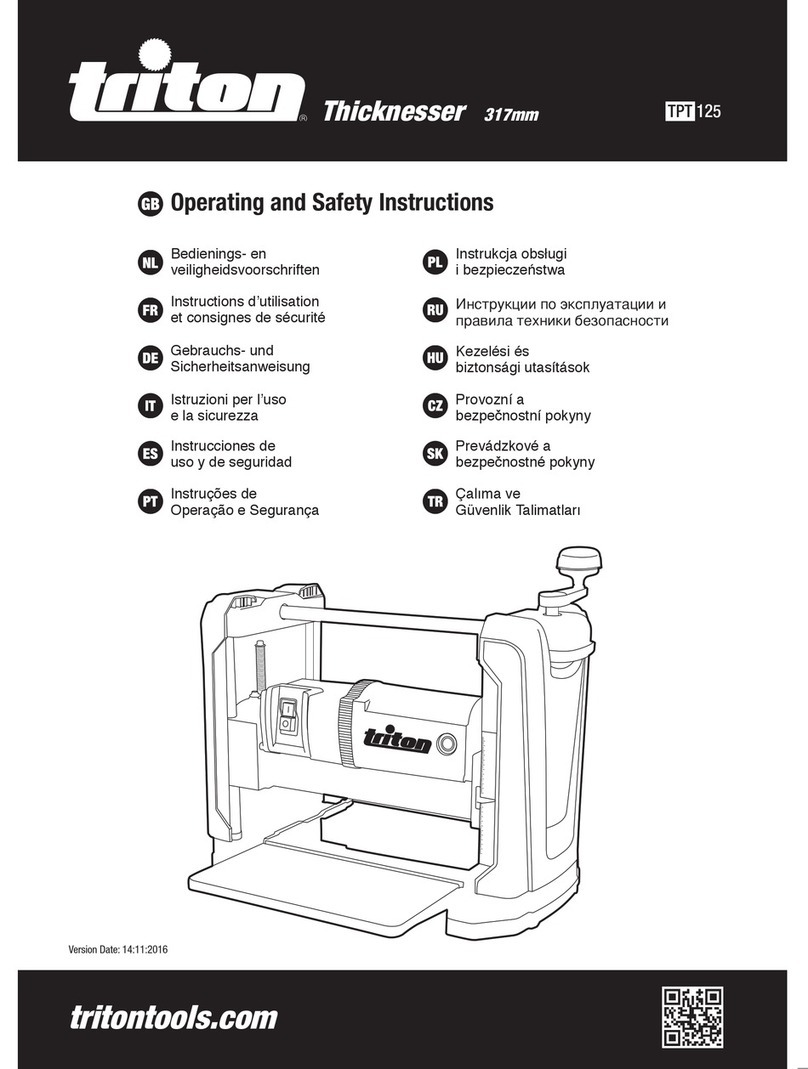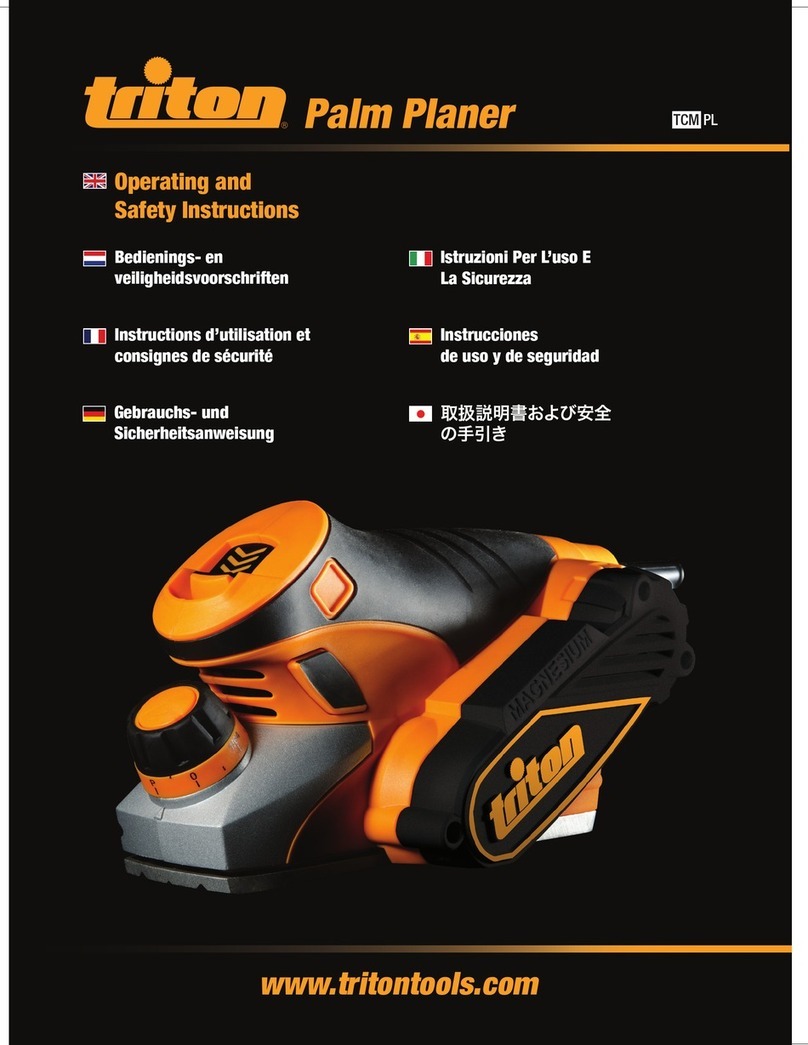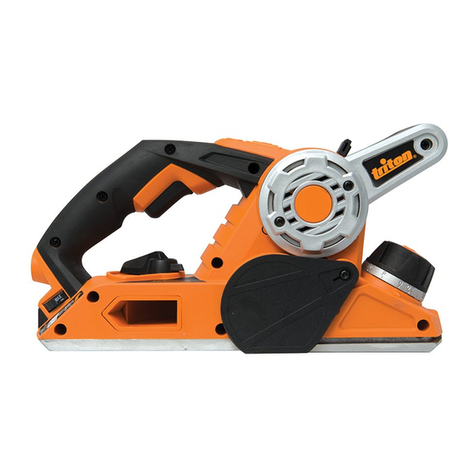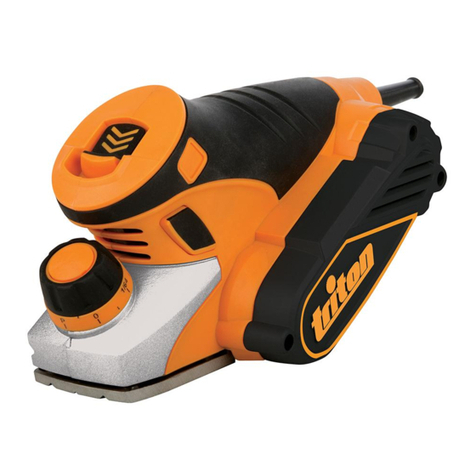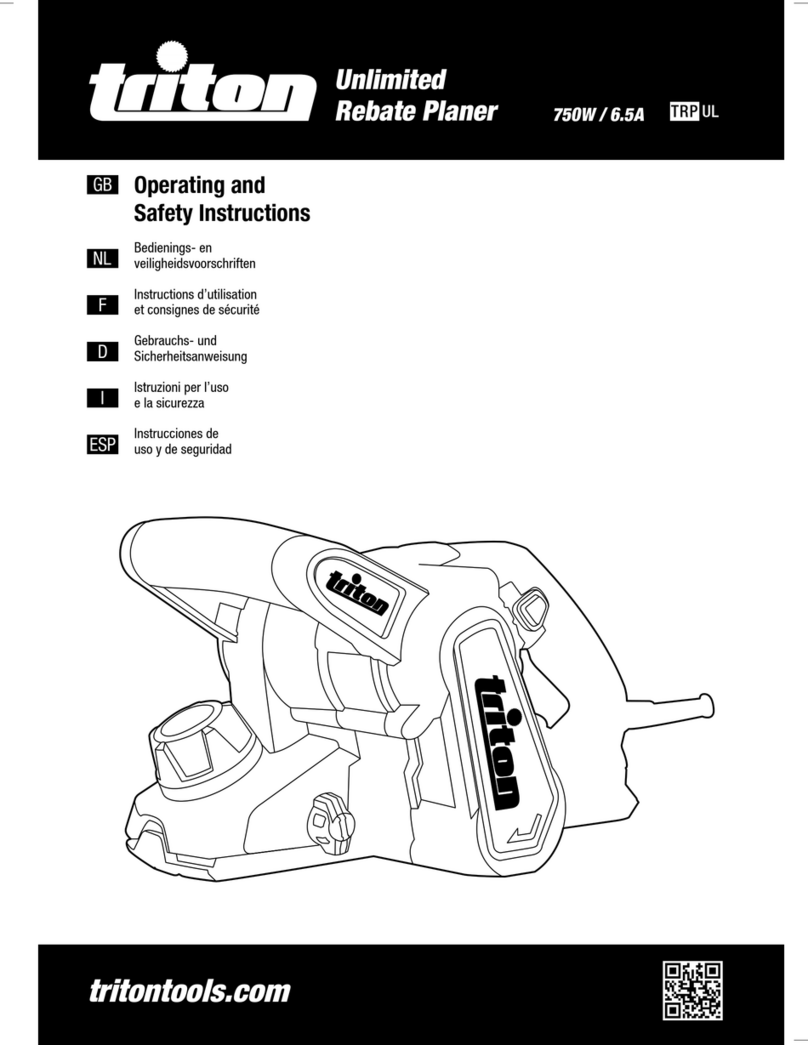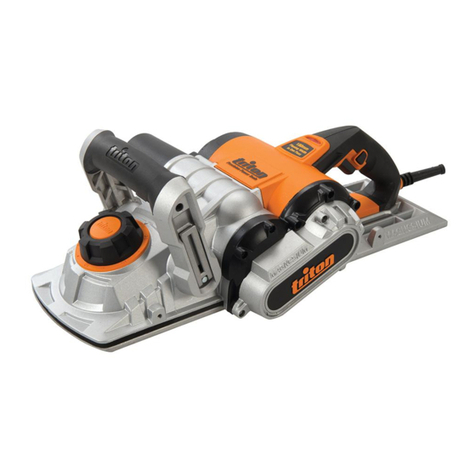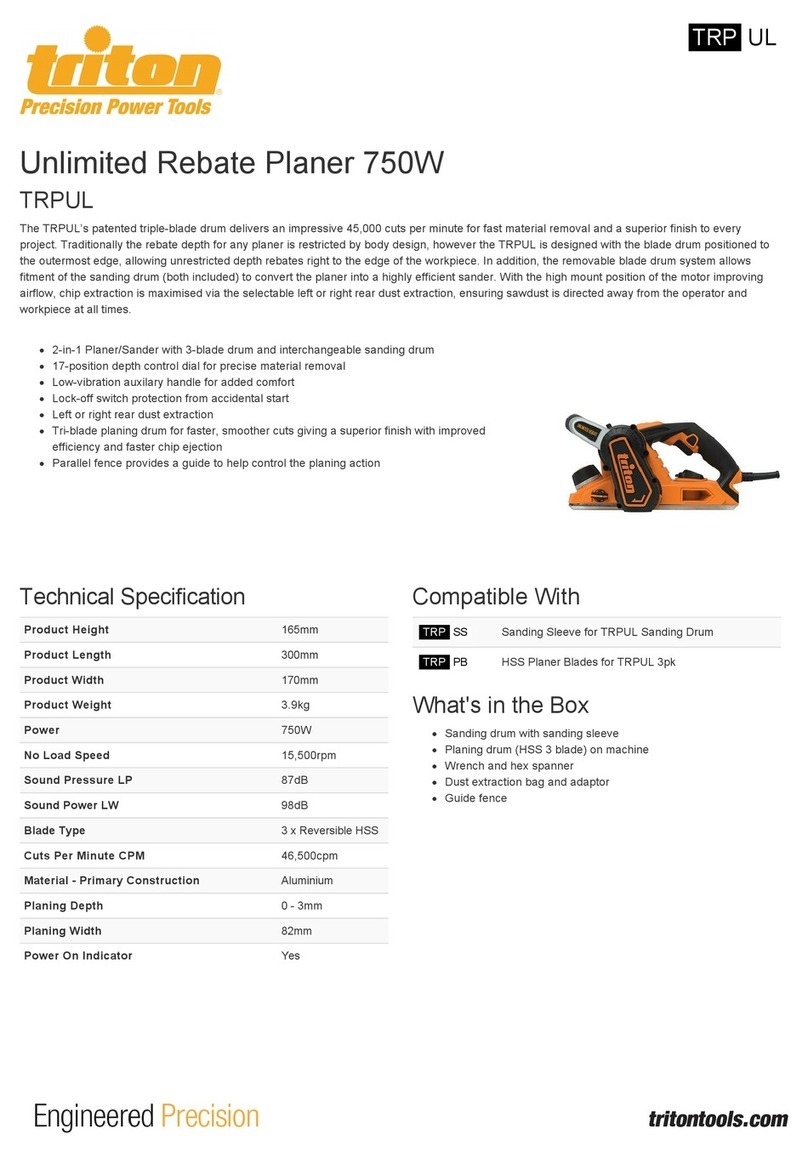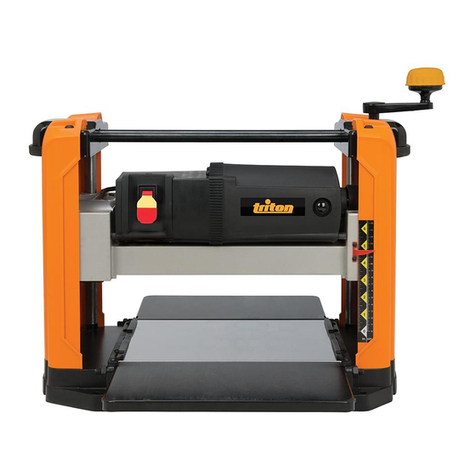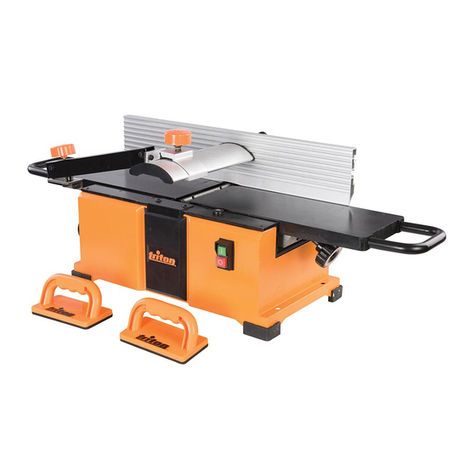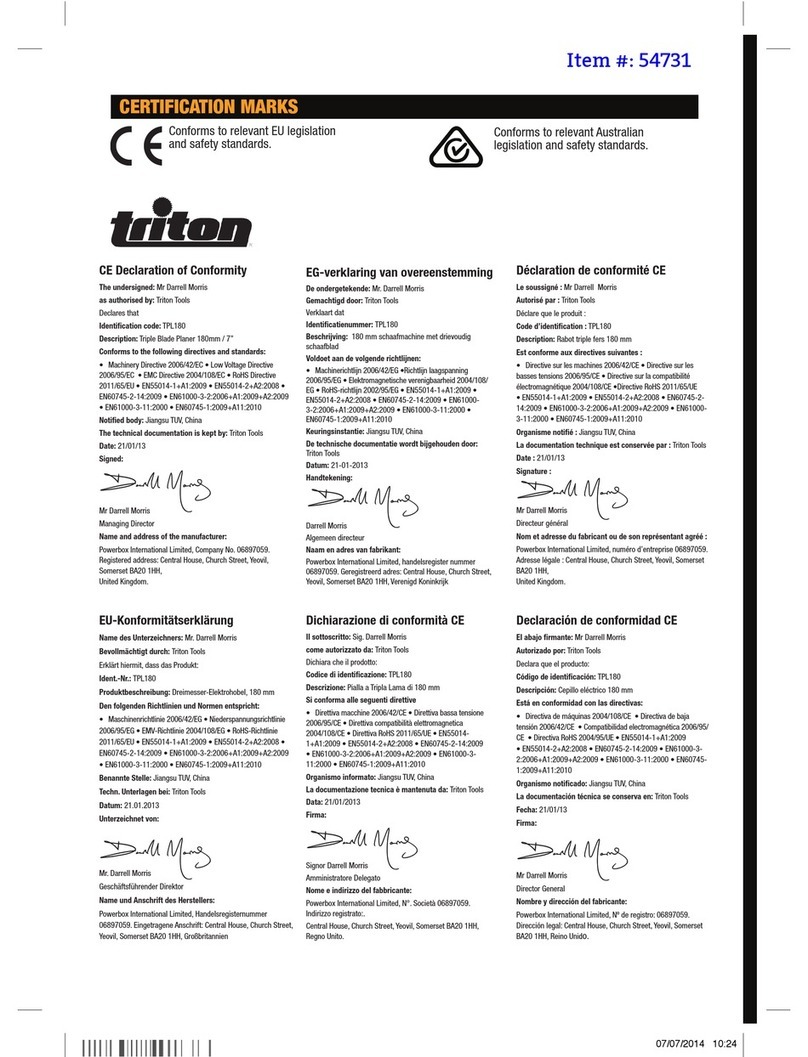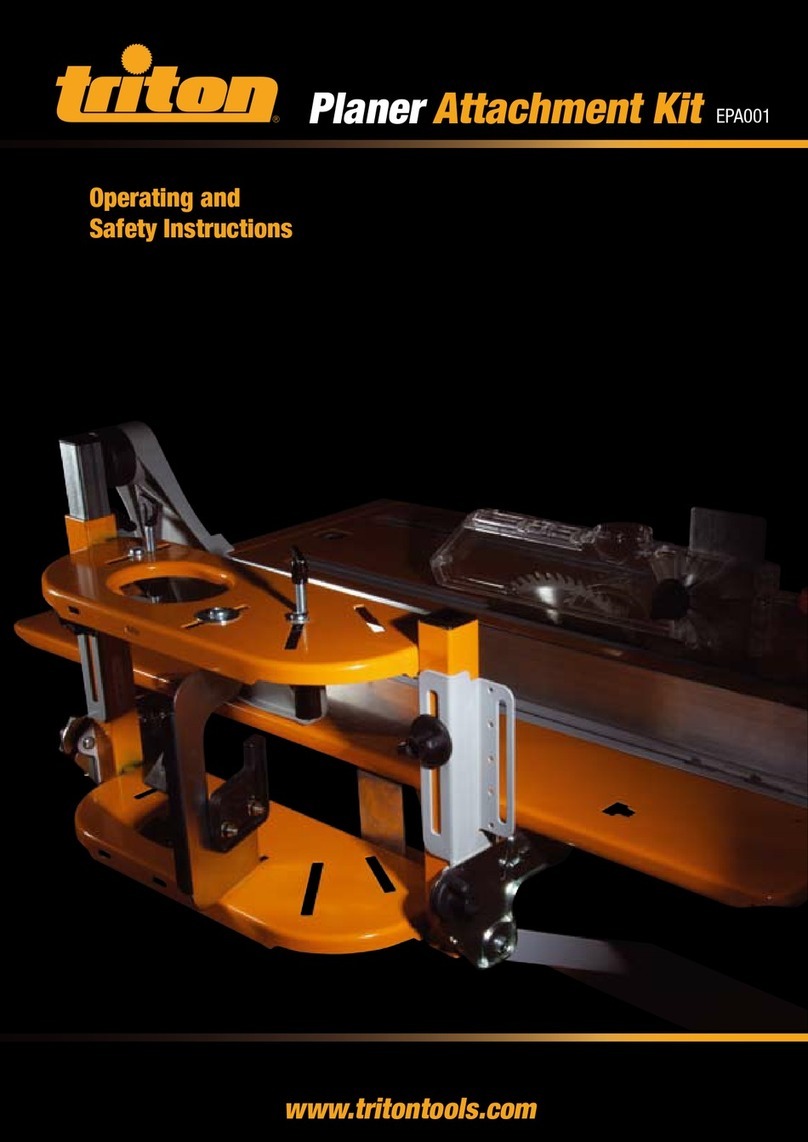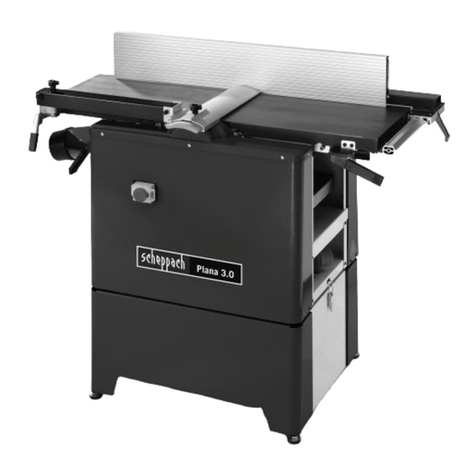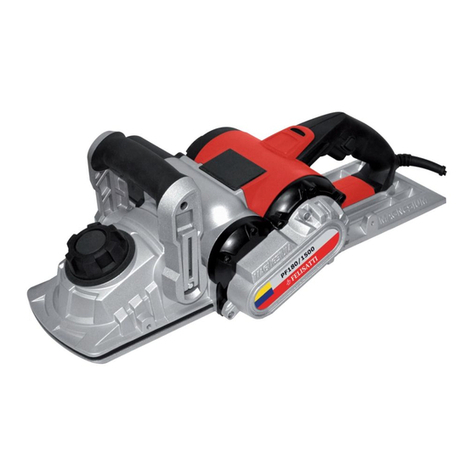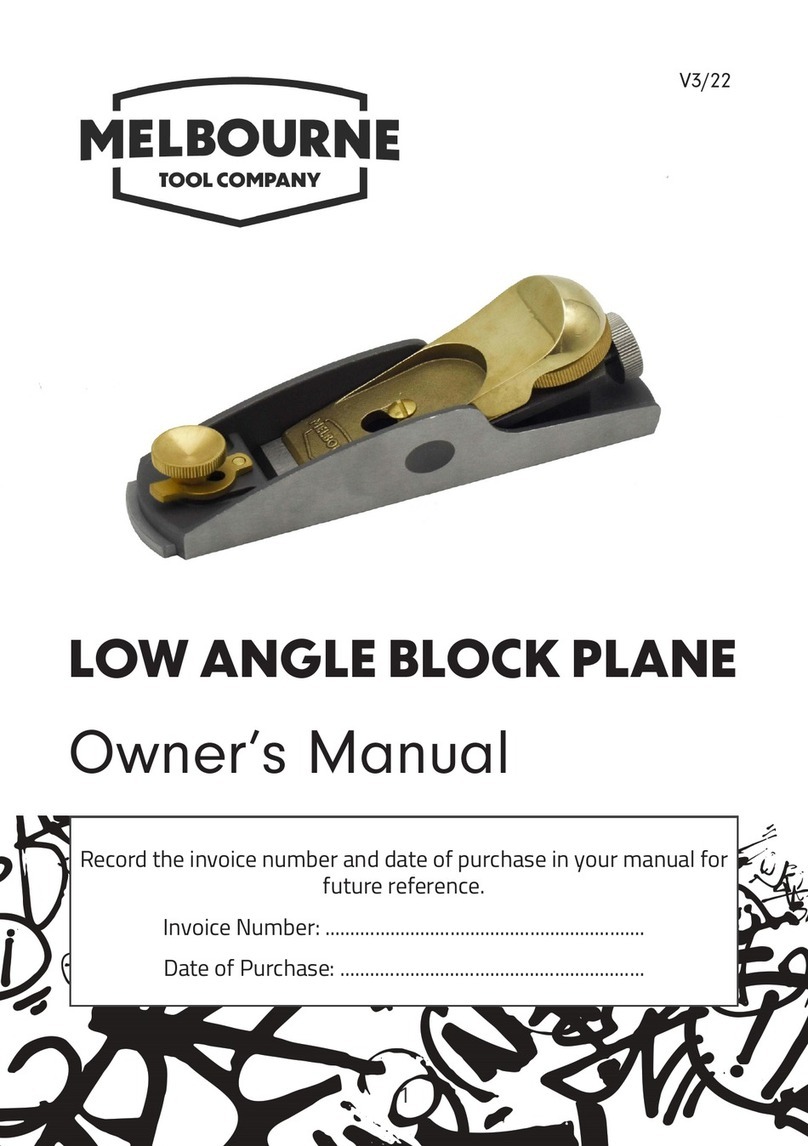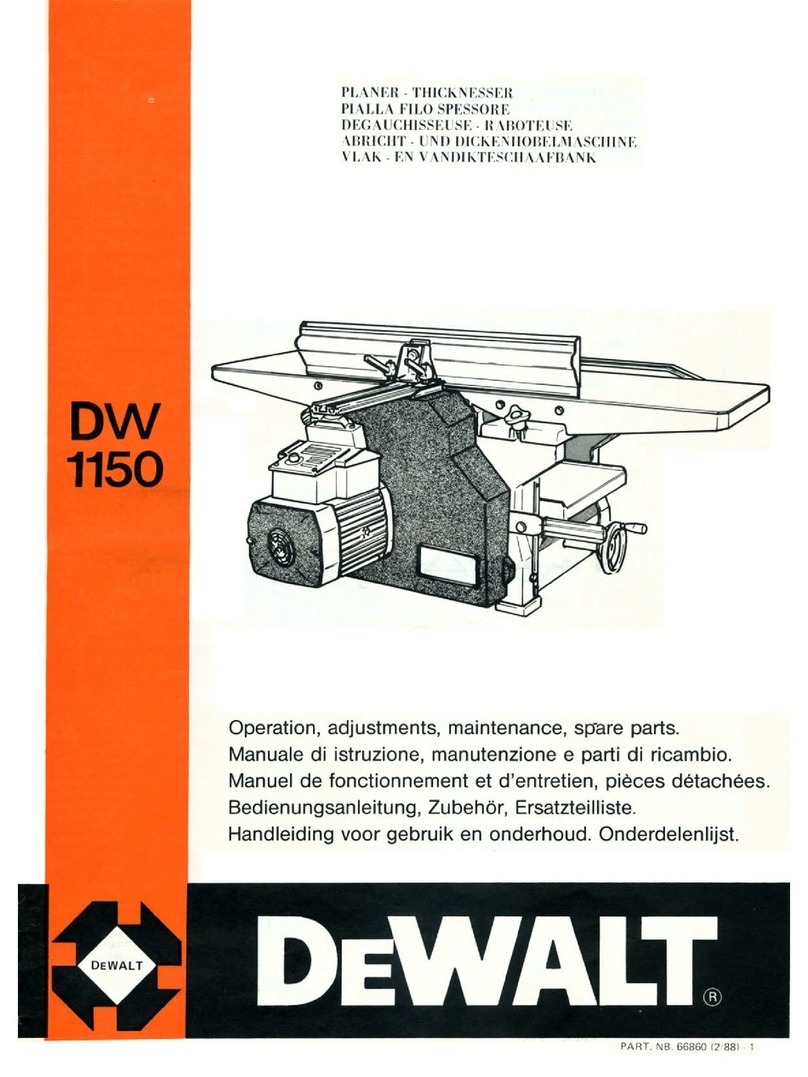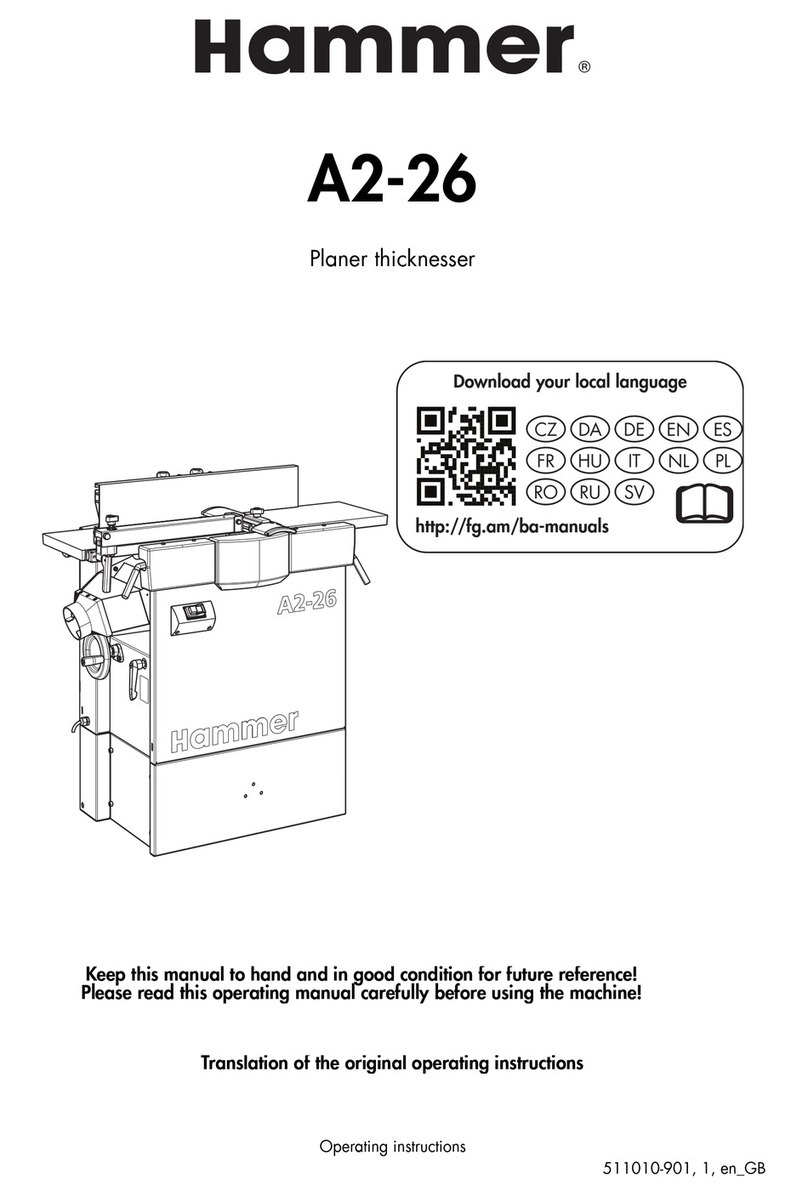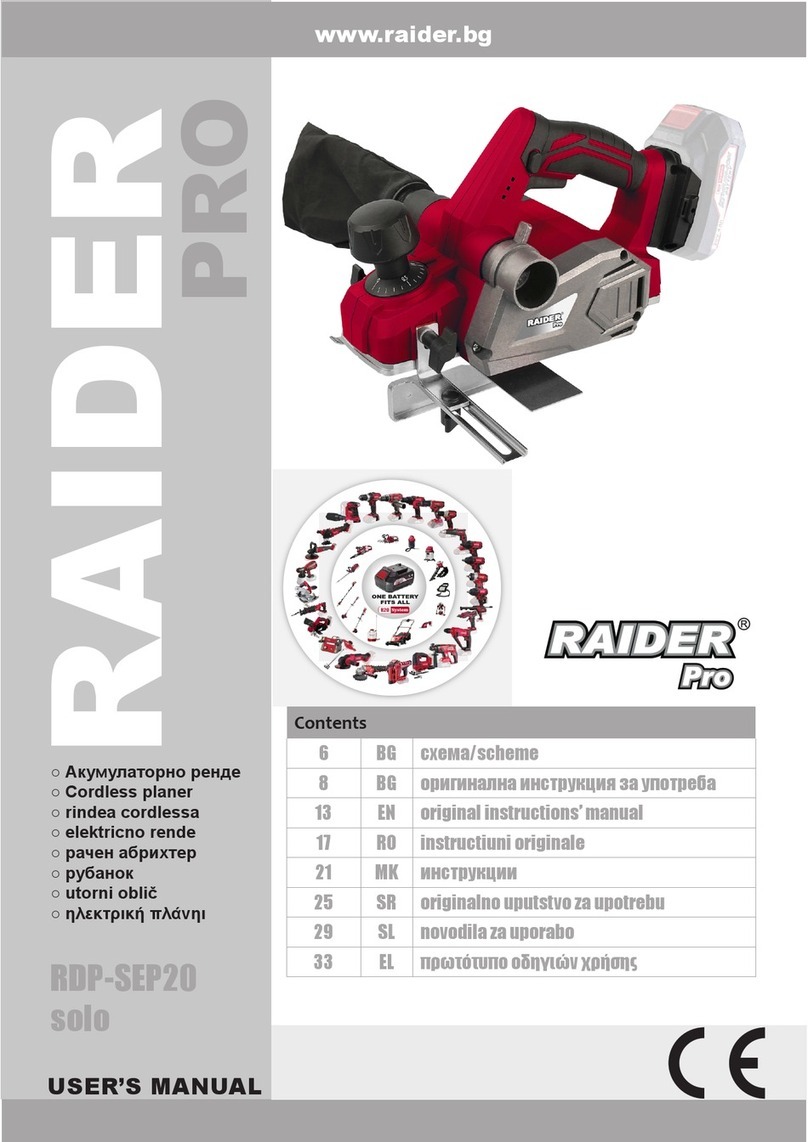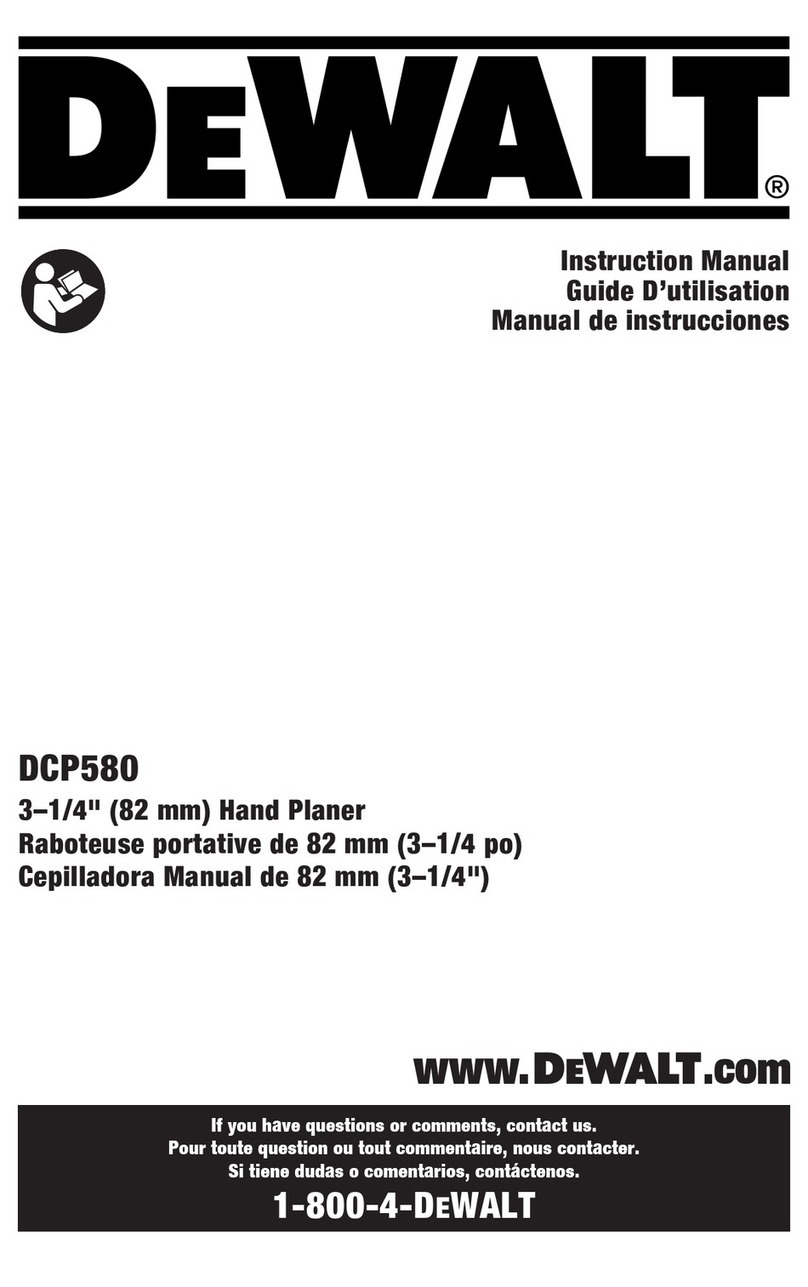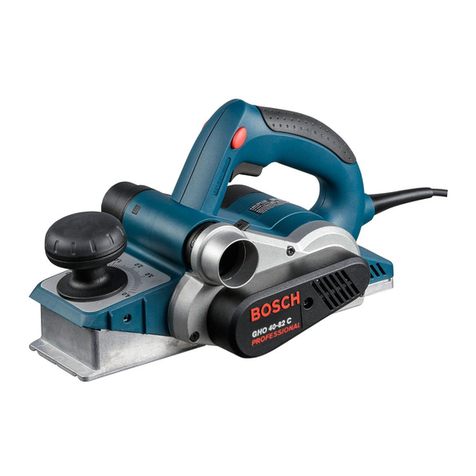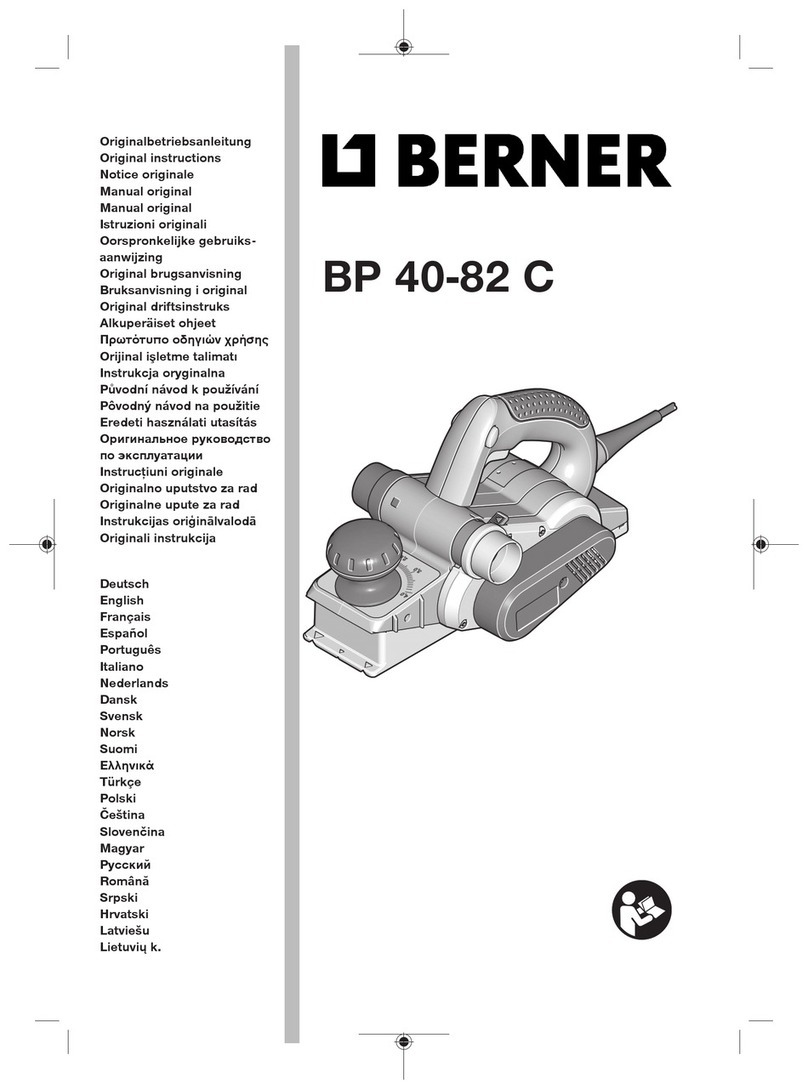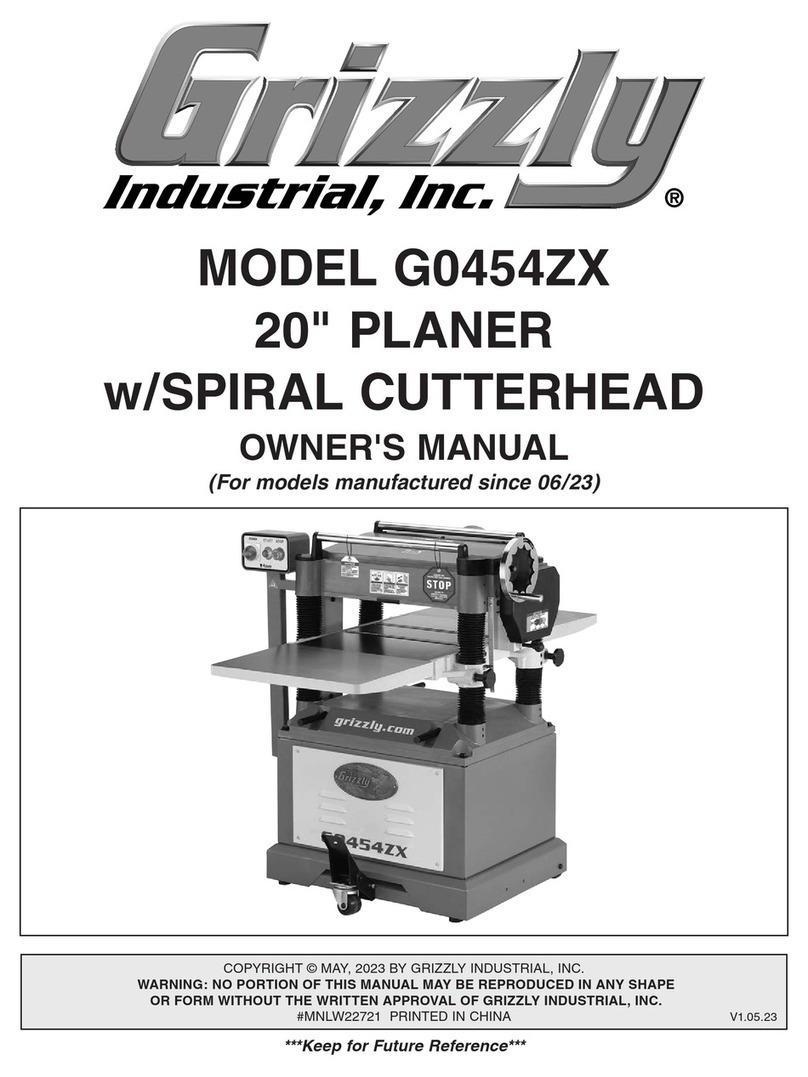
5
WARNING: Always wear ear protection where the sound level
exceeds 85dB(A) and limit the time of exposure if necessary.If
sound levels are uncomfortable, even with ear protection, stop
using the tool immediately and check the ear protection is correctly
tted and provides the correct level of sound attenuation for the
level of sound produced by your tool.
WARNING: User exposure to tool vibration can result in loss
of sense of touch, numbness, tingling and reduced ability to grip.
Long term exposure can lead to a chronic condition.If necessary,
limit the length of time exposed to vibration and use anti-vibration
gloves. Do not operate the tool with hands below a normal
comfortable temperature, as vibration will have a greater effect.
Use the gures provided in the specication relating to vibration to
calculate the duration and frequency of operating the tool.
WARNING: The vibration emission during actual use of the
power tool can differ from the declared total value depending on
the ways in which the tool is used. There is the need to identify
safety measures to protect the operator that are based on an
estimation of exposure in the actual conditions of use (taking
account of all parts of the operating cycle such as the times when
the tool is switched off and when it is running idle in addition to
the trigger time).
The declared vibration total value has been measured in
accordance with a standard test method and may be used for
comparing one tool with another. The declared vibration total value
may also be used in a preliminary assessment of exposure.
Sound levels in the specication are determined according to
international standards. The gures represent normal use for the
tool in normal working conditions. A poorly maintained, incorrectly
assembled, or misused tool, may produce increased levels of noise
and vibration. www.osha.europa.eu provides information on
sound and vibration levels in the workplace that may be useful to
domestic users who use tools for long periods of time.
General Power Tool Safety Warnings
WARNING: Read all safety warnings, instructions,
illustrations and specications provided with this power tool.
Failure to follow all instructions listed below may result in electric
shock, re and/or serious injury.
Save all warnings and instructions for future reference.
The term “power tool” in the warnings refers to your mains-operated
(corded) power tool or battery-operated (cordless) power tool.
1) Work area safety
a) Keep work area clean and well lit. Cluttered or dark areas
invite accidents.
b) Do not operate power tools in explosive atmospheres, such
as in the presence of ammable liquids, gases or dust.
Power tools create sparks which may ignite the dust or fumes.
c) Keep children and bystanders away while operating a
power tool. Distractions can cause you to lose control.
2) Electrical safety
a) Power tool plugs must match the outlet. Never modify the
plug in any way. Do not use any adapter plugs with earthed
(grounded) power tools. Unmodied plugs and matching
outlets will reduce risk of electric shock.
b) Avoid body contact with earthed or grounded surfaces,
such as pipes, radiators, ranges and refrigerators.There
is an increased risk of electric shock if your body is earthed or
grounded.
c) Do not expose power tools to rain or wet conditions. Water
entering a power tool will increase the risk of electric shock.
d) Do not abuse the cord. Never use the cord for carrying,
pulling or unplugging the power tool. Keep cord away
from heat, oil, sharp edges or moving parts. Damaged or
entangled cords increase the risk of electric shock.
e) When operating a power tool outdoors, use an extension
cord suitable for outdoor use. Use of a cord suitable for
outdoor use reduces the risk of electric shock.
f) If operating a power tool in a damp location is
unavoidable, use a residual current device (RCD) protected
supply. Use of an RCD reduces the risk of electric shock.
g) When used in Australia or New Zealand, it is recommended
that this tool is ALWAYS supplied via Residual Current
Device (RCD) with a rated residual current of 30mA or less.
h) Use proper extension cord. Make sure your extension cord
is in good condition. When using an extension cord, be
sure to use one heavy enough to carry the current your
product will draw. An undersized cord will cause a drop in line
voltage resulting in loss of power and overheating.
3) Personal safety
a) Stay alert, watch what you are doing and use common
sense when operating a power tool. Do not use a power
tool while you are tired or under the inuence of drugs,
alcohol or medication. A moment of inattention while
operating power tools may result in serious personal injury.
b) Use personal protective equipment. Always wear eye
protection. Protective equipment such as a dust mask,non-skid
safety shoes, hard hat or hearing protection used for appropriate
conditions will reduce personal injuries.
c) Prevent unintentional starting. Ensure the switch is in the
OFF-position before connecting to power source and/or
battery pack, picking up or carrying the tool. Carrying power
tools with your nger on the switch or energising power tools
that have the switch ON invites accidents.
d) Remove any adjusting key or wrench before turning the
power tool ON. Awrench or a key left attached to a rotating part
of the power tool may result in personal injury.
e) Do not overreach. Keep proper footing and balance at
all times. This enables better control of the power tool in
unexpected situations.
f) Dress properly. Do not wear loose clothing or jewellery.
Keep your hair and clothing away from moving parts. Loose
clothes, jewellery or long hair can be caught in moving parts.
g) If devices are provided for the connection of dust extraction
and collection facilities, ensure these are connected and
properly used. Use of dust collection can reduce dust-related
hazards.
h) Do not let familiarity gained from frequent use of tools
allow you to become complacent and ignore tool safety
principles. A careless action can cause severe injury within a
fraction of a second.
Uncertainty K: 3dB(A)
Weighted vibration: 4.34m/s² (main handle)
7.0m/s2(front handle)
Uncertainty: 1.5m/s2(main & front handle)
The sound intensity level for the operator exceeds 85dB(A)
and sound protection measures are necessary.
982168_OwnerManual.indd 5982168_OwnerManual.indd 5 21/11/2022 08:1221/11/2022 08:12
